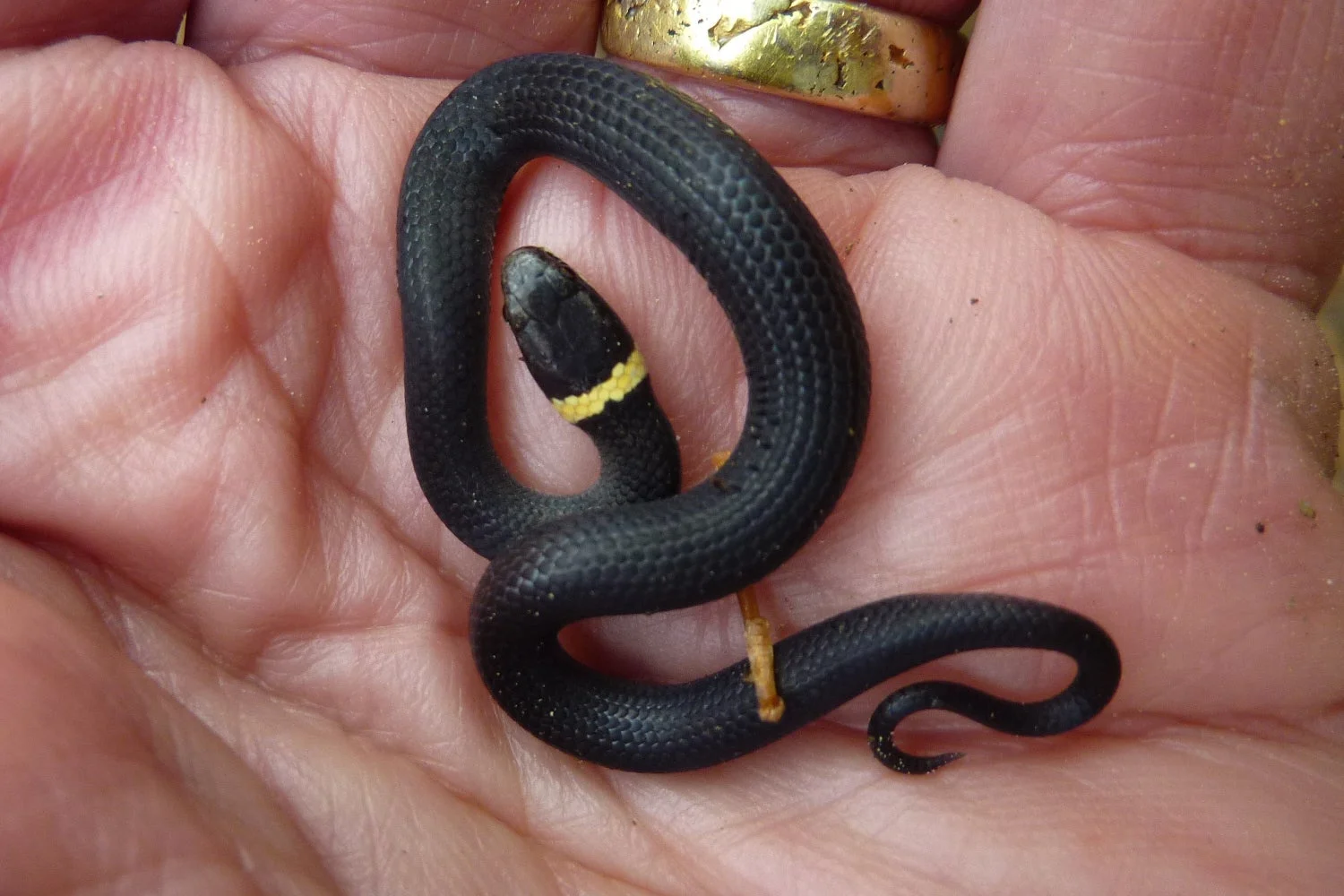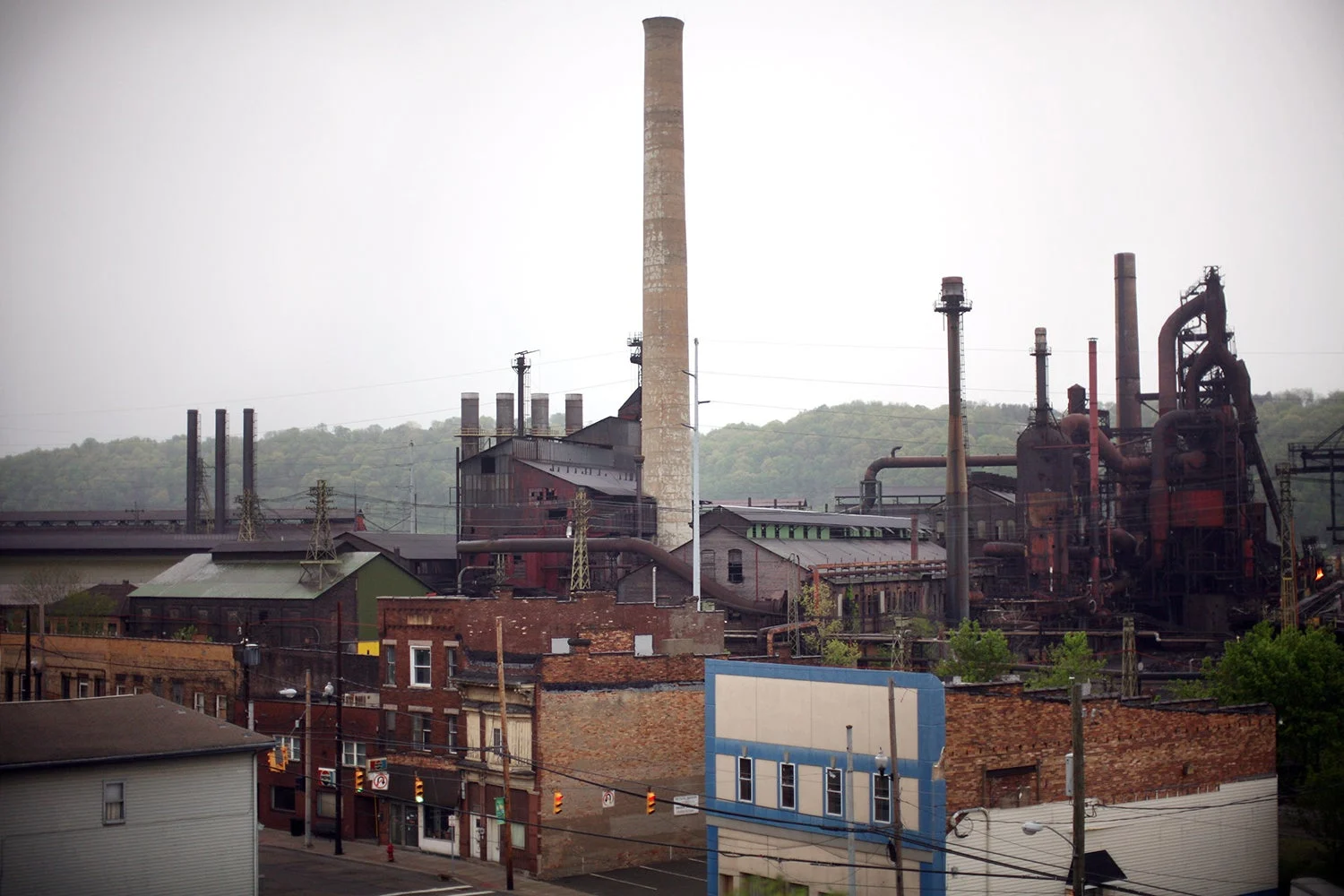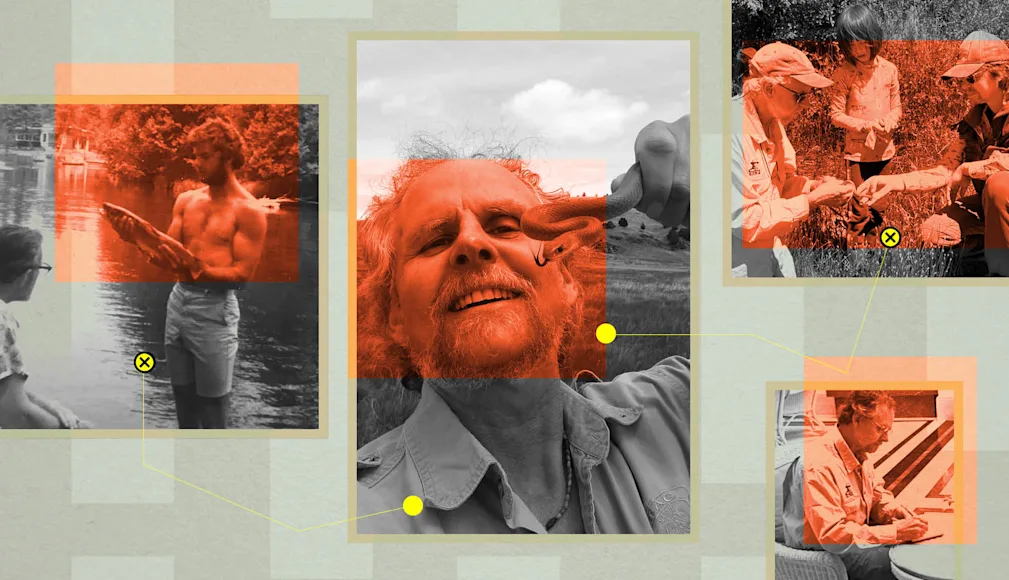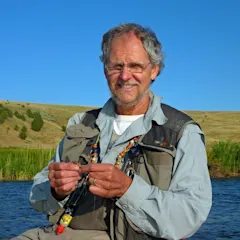IN THE ALLEGHENY FOOTHILLS of my childhood, a boy had a choice between two doors. Open his front door, and there was the town—friends and enemies, fistfights and football—and down in the valley, the soot-blackened dragon that dominated the skyline, belching smoke and fire. This was Wheeling Steel’s 44-inch mill, where the opening scenes of The Deer Hunter were filmed. The Academy Award–winning movie got the grit of the valley right, but you can’t smell celluloid film, and the true nature of the mill was its odor. The rotten-egg funk, a mix of hydrogen sulfide and the headache-inducing scent of acid-treated steel, made it among the most obnoxious and unhealthy places to live in the country. Harvard scientists studying industrial air pollution in the 1970s and 1980s ranked my town as the dirtiest in all 50 states.
The back door of the house opened onto an entirely different landscape. Two landscapes, to be accurate, a before and after. The before was lovely at first sight—soft-shouldered hills bathed in sepia tones and dark hollows carved by water and sanded by time. Upon scrutiny, however, it became apparent that the muted colors and hazy skies were actually caused by a fine metallic dust that was emitted by the mills. It was called fugitive dust and could cause respiratory maladies along with heart disease and cancer.
The other vista, the after vista, was the same country after it had been strip-mined for its coal by mechanical draglines and earthmovers so enormous that one could park ten cars inside their buckets. This was Deliverance country, to reference another brooding film, where a boy could get shot at for venturing too close to a hermit’s still, where there were cliffs to test his foothold, thorns to donate blood to, woods to get lost in, and creeks to drown worms on hooks.
My mother’s rock garden on the side yard straddled these two worlds. It was there, when I was playing with the little girl from down the street, that the pivotal moment of my life occurred. It was just a glimpse, a slim satin ribbon disappearing into a crack in a stone.
“Copperhead!” Marty shrieked. “Copperhead!”
My father heard the shouts and came running, but his face relaxed as I described the snake. I pointed to the stone where it had disappeared. Dad lifted it. There was the serpent condemned in Genesis, coiled as gracefully as a poem.
“Why, it’s a ringneck snake,” he said.
Dad handed it to me. The snake, which was sooty black and wore a gold collar, made no attempt to bite, but curled about my fingers and flicked its tongue, tickling my skin. I passed it from one hand to the other, pouring it like liquid rope, then at my father’s direction let it go back under the stone. I did not know then that it would be the first snake of thousands I would find, or that from that day forward it would be the back door for me, the natural world, or what remained of it, where stones called to be turned.

Finding a ringneck snake, like this little beauty, was one of the defining moments of the author’s life. Keith McCafferty
With this new fascination came the realization that adults were prejudiced against what they did not understand, and that their fears were stoked by ignorance. My father was an exception, although his knowledge was limited. It became clear that the only way I could learn as much about snakes as I wanted was to learn how to read. This I did with my mother’s help, and by the age of 5, I had devoured every word of Raymond Ditmars’ Snakes of North America and was able to recite the names of all 102 species that inhabited the continent, many in Latin. This I did every Sunday morning, whispering under my breath while enduring Reverend Crenshaw’s church sermons. It earned me stern looks and mothers’ admonitions to their children to stay away from me, for here in the house of God was not only a boy who handled serpents, but one who spoke in tongues.
My grandmother was steeped in superstitions. She would stuff towels under the doors when she visited, hoping to keep my collection of snakes at bay. “For pity’s sake, child,” I can recall her saying. “I seen a milk snake suck the breath from a baby’s mouth. You laugh, but who you’re playing with is the devil in disguise, and I’m the one told you so.”
That devil, in its various vibrant colors, would prove to be my ticket out of the smog suffocating the Ohio Valley. At first, my father and I drove only a few miles here and there. To Cross Creek often, in those early years, where Dad fished for smallmouth bass while I sought out the pugnacious northern water snake, Natrix sipedon, and the elegant and docile queen snake, Natrix septemvittata.

An eastern milk snake isn’t venomous, but the author’s grandmother warned him away from them anyway. John Sullivan / Alamy
In time, we ventured farther afield. My father was a locomotive engineer for the Pennsylvania Railroad, a World War II veteran who had driven trains for Patton’s Army. I’d persuade him on days off to drive us north to the Monongahela National Forest, where I had the chance of catching a DeKay’s snake or a short-headed garter snake, species that were rare where we lived. On other occasions we would head west, where there was a better chance of finding a blue racer.
This was in the same rattletrap VW bus that we drove out West to camp in the Rocky Mountains when I was 11. The bus broke down outside Denver, and we had to be towed into the city under what I first took to be clouds. Then, with a start, I realized that the clouds were snow and that they blanketed a range of mountains, the first I had ever seen. While the VW was getting a new motor installed, my mother dropped me off at the public library downtown, saying she’d be back in a couple of hours.
Some months earlier, my father had told me about Jim Corbett, whose stories of hunting man-eating tigers in India were immortalized in several books, none of which I had been able to find in the Carnegie library back home. In Denver, I found The Temple Tiger and More Man-eaters of Kumaon, a compilation of several Corbett stories. Knowing I had only enough time to read one story, I chose “The Talla Des Man-Eater,” because it was the longest. I walked up the steps of the library that day, knowing that I wanted to live a life of adventure. I walked down two hours later, knowing that I wanted to write about it.

Catching snakes led to fishing—both activities a “revelation of secrets.” Carolyn Ann Ryan / Getty Images
That dream would gather wool for the time being, and as I moved into the teen years, I found my interests beginning to expand.
Fishing, another back-door pursuit, and my father’s passion, came to have an equal allure. Perhaps it is because I viewed fishing and snake hunting through the same lens—seeing both as the revelation of secrets. Most people, I learned, are satisfied with surfaces, but to catch a bass or trout you had to look beneath the reflection of water, in the same way that to catch a snake, you had to lift the stone.
BY THE TIME I entered high school, I had traded my snake stick—a broom handle taped to an angle iron to rake through grass and turn pieces of bark—for a bamboo casting rod, a Meek No. 2 free-spool casting reel, and a red-and-white wooden bass plug called a Midge-Oreno. To reach the stretches of Cross Creek I hadn’t fished before, I hopped trains where they slowed at a water tower, then rode the rails and jumped off with my heart in my throat when the trains speeded up. Looking back, it is a wonder I didn’t kill myself on the rails or on the rocks.
Despite such acts of adolescent stupidity, and despite the attraction that bass and unturned stones still had for me, the front door of our house began to beckon. By my junior year in high school, I needed money, both for college tuition and for the ring my girlfriend wanted on her finger. The steel mill was the solution; the fact that the town was mob run, the catch. No job in the mill was earned. You had to know someone. I remember a friend taking me into the basement of a house on Cleveland Avenue, where a stout man wearing a tank-top undershirt was smoking a cigar and watching the Pittsburgh Pirates on TV.
My friend said, “I’d like you to meet my friend, Keith.”
The man chewed his cigar. He took a sip from a beer can. When the batter struck out, he crumpled the can in his fist. His eyes never left the screen. We waited a minute, but that was the entirety of the introduction. My friend and I walked back up the stairs. I got the call-up the next day.

The Wheeling Steel plant at Mingo Junction, Ohio, where the author once worked. Rick Gershon / Getty Images
At the company store in Mingo Junction, I was issued a hard hat, a flame-retardant spark jacket, safety glasses, and steel-toed boots—the lot against my first paycheck. Then I walked toward the gate, where old-timers who had retired from the mill whiled away their hours, not knowing what else to do with the rest of their lives. I walked past them and into the bowels of the hell that they had somehow learned to love.
In the mill, I learned quickly, some jobs were superior to others. Every week I would bid on a good-paying job—timekeeper, oiler, millwright helper, electrician’s helper, crane operator assistant. The next week someone with more seniority would bid my job, and I’d be bumped back to general labor, which, I came to understand, meant no labor. When I’d report to the foreman, he’d tell me that he didn’t want to see my face again until I punched the time clock at the end of the shift. The mill had several men to do every one man’s job and he had no work for me. But it would reflect badly on him if a supervisor found me idle. So, I’d walk down to the Ohio River and skip stones and fish with dough balls for channel catfish and carp, the only fish hardy enough to survive the polluted water. There was a rusty boxcar on the bank where a few mill workers gathered, sitting on packing crates and playing cards. When I hear people lament the demise of the steel industry and blame it on cheap foreign steel, I remember how those mills operated and think that it’s no wonder.
The worst job I had was in the coke plant, shoveling coal chunks that fell from overburdened trolley cars in the sweltering heat of an enclosed coal elevator. I’d get so covered in soot that other workers assumed I was black. One evening, after several grueling days shoveling coal, I was kissing my girlfriend when she recoiled from our embrace because black residue was seeping out of my nose and ears and ruining her pink cashmere sweater.
The summer ended with a promise to myself to never again set foot in a steel mill or, for that matter, a coal mine. But the sweater was not the only casualty in my relationship with my girlfriend. When I balked at buying the ring and she realized I actually planned to attend a college 500 miles away, she left me for someone willing to reach deeper into his pockets and stay closer to home.
WHILE IN COLLEGE, I landed summer jobs with Michigan’s Department of Natural Resources, restoring trout habitat on the Au Sable River. This was the stretch called the Holy Water, the first fly-fishing-only reach of river in the country. My bedroom was a tent on the riverbank, and I spent my days building riprap and stump covers. A fly rod was never far from hand.
It was while fishing at night, above an old hunting lodge called Wa-Wa-Sum, that I caught my first trout over 20 inches. In fact, if you went up or down a few miles in either direction from my tent, a lot happened here. First big trout, first Massasauga rattlesnake, first night of a thousand kisses. Other firsts.

A bend in Michigan’s Au Sable river, where the author worked, camped out, and fished during college summers. Neil Weaver
The rattlesnake I admired as it warmed itself on the shoulder of a sandy road. Worried that someone would run it over, I pinned its head and carried it into a field to release it. As I carried it, its mouth was agape, venom dripping from the fangs. Its tail buzzed like a hornet in the palm of my left hand. Looking back, I’m pretty sure that snake was the least dangerous of the temptations I would succumb to on the Au Sable River.
By the end of my third season on the river, it became clear that if I wanted to continue living life under a ceiling of sky, I had to learn how to do something other than drive 8-penny nails with a 4-pound hammer.
THE DREAM OF WRITING had been simmering since Denver. In the years since, I had told anyone who asked about my future that I was going to become an outdoor writer like my hero at the time, A.J. McClane, the fishing editor of Field & Stream. This was optimistic. McClane had fished in a hundred countries. I had caught a few bass, trout, and carp in two states. More to the point, I had yet to write a word. When consecutive girlfriends called my bluff, asking to see my work, I got new girlfriends. But the judgment had stung, and armed with a No. 2 pencil, I set about to prove the lot of my doubters wrong.
My first story was composed at a campground on a coastal stream in Washington’s Olympic Peninsula. I had run out of money driving across the country to find work, and down to my last tin of Spam, I tried to procure my dinner with a rod, for the stream was running red with spawning sockeye salmon. Failing to interest a fish with my flies, I began heaving my hatchet at them, and after dozens of throws finally managed to cut one practically in half. I cooked it up on my Coleman stove and wolfed down all of it, despite the ruby flanks being a red flag, for the flesh was soft and the flavor a little off.
I wrote my second story a few weeks later, while camping underneath a truck-mounted drill rig. By then I had landed a job as a driller’s apprentice with the State of Washington Highways Department.
Being the son of a frugal Irishman, rather than pay for a motel room, I saved my per diem by sleeping under the rig. Dinner on most nights was a slice or two of Wonder Bread, followed by a second course of SpaghettiOs heated with Sterno. I would eat while sitting back against one of the giant tires, then write longhand until it became too dark to see the words. One night when we were drilling in the Cascade Mountains, I was awakened by a mountain goat as it stuck its head under the rig and began tugging at the toe of my sleeping bag. On another occasion we were drilling outside of Yakima, and after eating in town, a rare splurge, I was hiking back to the rig when I was approached by two prostitutes whose faces were streaked with tears and mascara. They were off the clock, they said, and just wanted to tell me that Elvis Presley had died.

The author with a coho from Alaska’s Goodnews River. Courtesy of Keith McCafferty
Writing proved to be more difficult than I had imagined. But I was armed with the arrogance of youth and never doubted myself, even as rejection letters showed up at the mailbox. Finally, the editor of Flyfisher Magazine, Michael Fong, wrote to say that he liked the piece I submitted about fishing in Yellowstone Park, where I had wet a line on my drive West, and he might have liked it even more if it had included pages 6, 7, and 8, which were missing from the manuscript. Would I send them, please? In fact, I had burned those pages to start a campfire, mistaking them for an earlier draft. I rewrote the missing pages from memory, and he bought the piece for $175.
I used the first part of that check to buy an Olivetti manual typewriter. Up to that point, I’d written longhand and had to find communal typewriters in libraries to compose final drafts. With the rest of the money, I took my mother to a Lou Rawls concert. The words I had typed were thanks to her as much as my own endeavor, and I am grateful that she and my father lived to read my stories and the novels that followed.
WRITING IS A MAGIC TRICK of the mind, performed more often than not behind walls and by the glow of electric lights. It is an irony of the outdoor writing profession that much of the work is done indoors. I have written outside as much as possible—in a folding chair on a footbridge over a creek, in the passenger seat of a truck, and by the light of a Coleman Lantern in tent camps from Maine to Montana. And I have been luckier than many, for the stories coaxed from that old Olivetti proved to be my ticket to lead the life of adventure that I had aspired to since childhood. In time, the written word would take me to places that I thought I could visit only in my dreams. I would fish for Atlantic salmon under the midnight sun in Scotland, fight tarpon in Cuba, catch greyhounding sailfish off the coast of Costa Rica.
Thanks to writing, I was even able to follow the footsteps that Jim Corbett made as he hunted the man-eaters of Kumaon 100 years ago. It was while chasing the ghost of Corbett that I came across an adult Indian python coiled inside a thousand-year-old stone temple. It did not occur to me then that the python, by far the largest snake I had ever seen, was a fitting milestone in my search for nature’s secrets, one that had begun, improbably enough, with a choice of doors and the turning of a single stone.
_Read more F&S+
stories._






